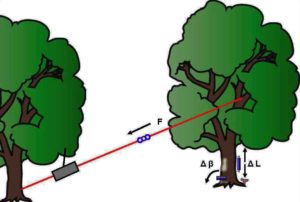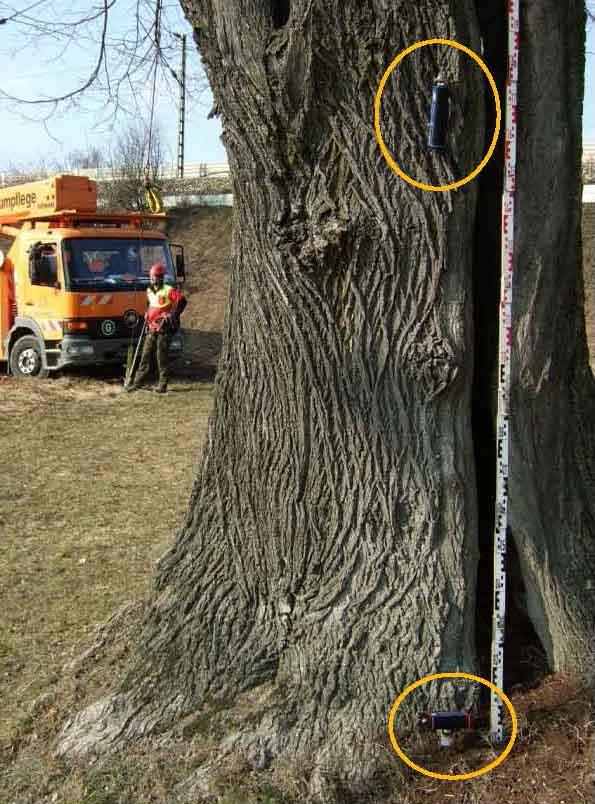Execution
The tree is subjected to a slowly increasing force, usually with the aid of a manual wire rope grip winch. The action of this force causes the trunk to bend, stretching (and compressing) the trunk fibres and causing the root plate to incline.
During the test, the application of force and the response of the tree are continuously monitored and recorded using high-precisionmeasuring equipment. The inclination is recorded using inclinometers, while the change in length of the trunk perihperal fibres is recorded using strain gauges, known as elastometers.
Green wood behaves elastically up to a certain point. Since different tree species have different wood properties, the deformation limits above which the fibres permanently change under compression have been determined for different species using very small samples in the wood laboratory (cf. Wessolly & Erb 2014).
By understanding this critical level of deformation, it can be ensured that only elastic deformation, far below this failure limit, occurs during pulling tests so that the tree is not damaged. Common to all tree species is that green wood fails sooner under compressive loading and is about twice as resistant to tensile stresses. Therefore, at what is described as primary failure, irreversible damage initially occurs on the compression side, and only at the final stage of fracture does the tree fail audibly and visibly on the tension side (Detter et al. 2015).
In the pulling test, the trees are inclined at the base of the trunk only up to a maximum of 0.25°. The root plate can be shown to return to its original position undamaged after such small inclinations (cf. Detter & Rust 2018).
Execution of Pulling Test:




